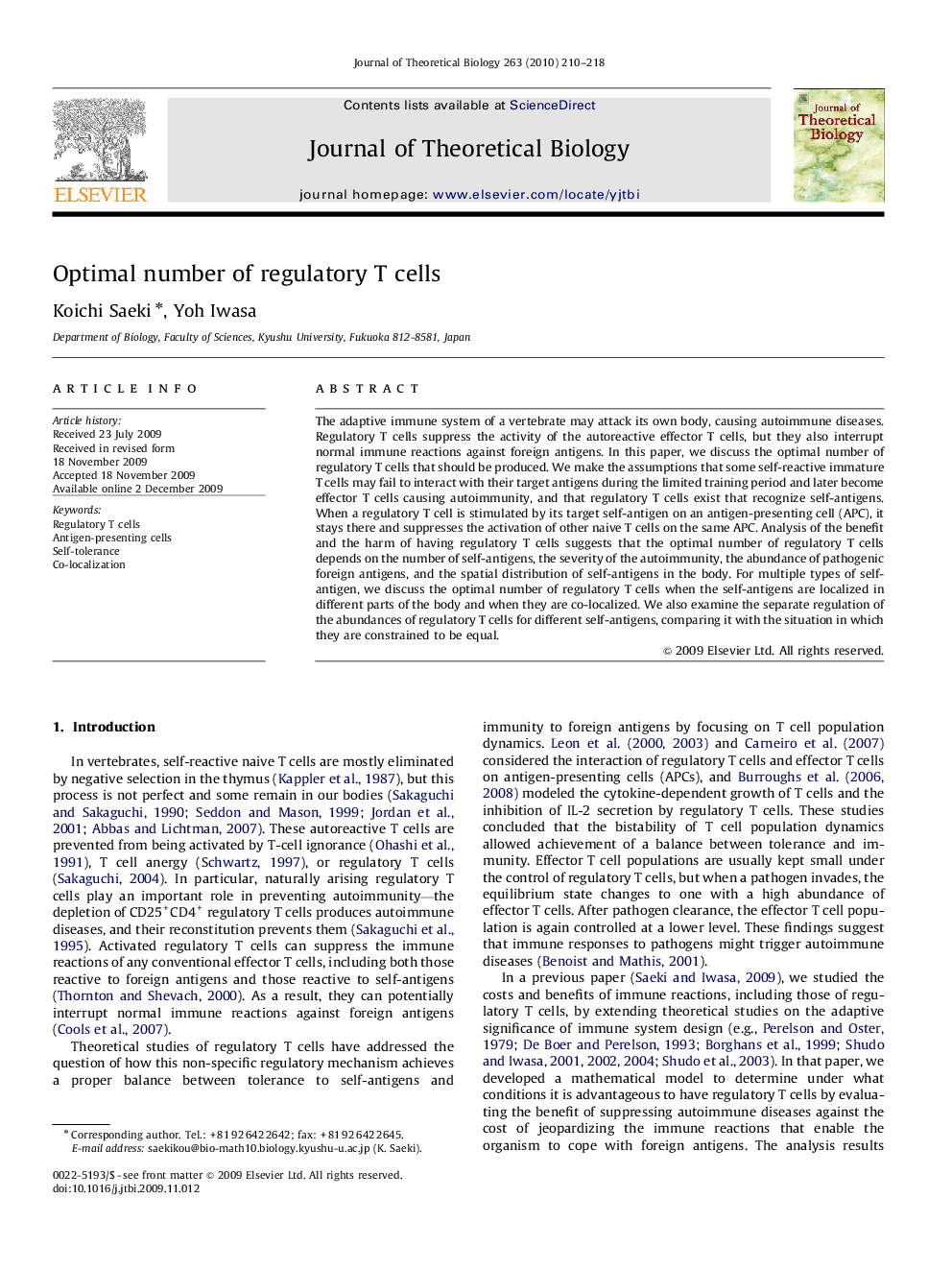| Article ID | Journal | Published Year | Pages | File Type |
|---|---|---|---|---|
| 4497579 | Journal of Theoretical Biology | 2010 | 9 Pages |
Abstract
The adaptive immune system of a vertebrate may attack its own body, causing autoimmune diseases. Regulatory T cells suppress the activity of the autoreactive effector T cells, but they also interrupt normal immune reactions against foreign antigens. In this paper, we discuss the optimal number of regulatory T cells that should be produced. We make the assumptions that some self-reactive immature T cells may fail to interact with their target antigens during the limited training period and later become effector T cells causing autoimmunity, and that regulatory T cells exist that recognize self-antigens. When a regulatory T cell is stimulated by its target self-antigen on an antigen-presenting cell (APC), it stays there and suppresses the activation of other naive T cells on the same APC. Analysis of the benefit and the harm of having regulatory T cells suggests that the optimal number of regulatory T cells depends on the number of self-antigens, the severity of the autoimmunity, the abundance of pathogenic foreign antigens, and the spatial distribution of self-antigens in the body. For multiple types of self-antigen, we discuss the optimal number of regulatory T cells when the self-antigens are localized in different parts of the body and when they are co-localized. We also examine the separate regulation of the abundances of regulatory T cells for different self-antigens, comparing it with the situation in which they are constrained to be equal.
Related Topics
Life Sciences
Agricultural and Biological Sciences
Agricultural and Biological Sciences (General)
Authors
Koichi Saeki, Yoh Iwasa,
